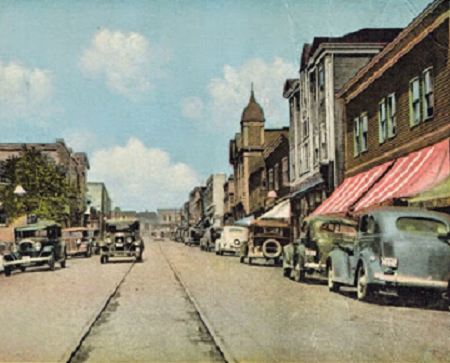Glace Bay, Nova Scotia / September 22, 1930
|
Nicholas Marthos, known locally as Nick the Greek, was born in Greece but had lived in Nova Scotia for 18 years. He was 36 years old and single. Mr. Marthos usually waited for fares on a downtown stand but around noon on Monday September 22, 1930, he was found in his taxi on the outskirts of Glace Bay. The car was parked on Tower Road which led to the Marconi towers and transatlantic wireless station, now a national historic site. Mr. Marthos had been savagely beaten with a blunt instrument. He was rushed to hospital but died at 1:30 p.m. without regaining consciousness. It was estimated that the attack took place about two hours before he was discovered. A nearby householder reported hearing a woman's scream at about the time Mr. Marthos was thought to have been attacked, but this proved to be a false lead. The police had other clues to work with, but while they pursued them rumours began to swirl. A man named Andred Lynk was reportedly arrested with a revolver and a blood-stained hammer in his possession. This was pure fiction. Police did find a bloody hand print inside the taxi and were optimistic that it would yield usable fingerprints, but the critical clue turned out to be a discarded vest found near the murder scene. Detective Daniel Nicholson recognized the vest as an item of prison clothing. His inquiries at Dorchester Penitentiary (New Brunswick) identified a prisoner by name. The 42-year-old Newfoundland man was released on parole in early August, 1930, after serving two years for robbery. The vest was issued to him on his release. Two young Glace Bay men reported seeing a man in brown clothes getting into Mr. Marthos's taxi a few hours before the victim was discovered. Prison mug shots enabled them to positively identify the suspect as the owner of the prison vest. Since the man had disappeared from Glace Bay, the next obvious step was to ask the Newfoundland Constabulary to look for him. He was quickly located at the home of his parents in the village of Old Perlican. He was arrested on November 7 and jailed in St. Johns. Newfoundland did not join Canada until 1949 so it was necessary to apply to a Newfoundland court to have the suspect extradited to Nova Scotia. Detective Nicholson travelled to St. Johns for the purpose, bringing with him details of the evidence against the prisoner. Since it seemed likely that the prisoner would fight extradition Detective Nicholson also brought along a lawyer. The man, however, did not oppose extradition and made a full confession to Dectective Nicholson and Crown Prosecutor Neil MacArthur. On his release from Dorchester he had come to Glace Bay hoping to find work in the coal mines. When he was unsuccessful he hung around Glace Bay, sleeping under fishing huts. He actually discarded his prison vest on a hot day early in August, more than a month before the murder. Mr. Marthos was targeted because he was supposedly in the habit of carrying a lot of money. After attacking and robbing Mr. Marthos the killer walked 20 km (12 miles) to Sydney, Nova Scotia and stowed away aboard the steamship Kyle. He landed undetected at Port aux Basques and made his way to Old Perlican. A watch belonging to Mr. Marthos and sold by the killer in Newfoundland was among the evidence brought to trial. The killer was tried and convicted of murder in February, 1931. His appeal was denied, as was his application for executive clemency. He was hanged on April 30, 1931. [Next column] |

Commercial Street, Glace Bay, Cape Breton, circa 1935 (?). Detail from a postcard. (Source: Cape Breton Photo And Memories. Image posted July 10, 2013 by Tom MacDonald.) On July 15, 1931, ten weeks after the execution, the Corner Brook newspaper Western Star published a ten-verse, 80-line "Lament" composed by Glace Bay resident Phil Penney. Intended to be sung to a popular tune called "Peter Emerley," it is an example of a traditional "execution ballad," a form dating back to at least the 17th century. In it the repentent killer confesses to his crime, prays for God's mercy and exhorts listeners to avoid his bad example. It contains these lines: One evening last autumn, The Lament became a popular folk song in Newfoundland and over the years folklorists have collected it in various versions from local singers. Phil Penney's manuscript version is in the Beaton Institute at Cape Breton University. The steamship Kyle, launched in 1913, had a long career as a ferry and freighter between Canada and Newfoundland until 1957 when she ran aground at Harbour Grace. In 2009 a proposal was made to move the stranded ship and turn it into a museum, but plans fell lthrough due to lack of money. Meanwhile, the family home in Old Perlican is now a heritage property. |

 • Driver Profiles
• Driver Profiles